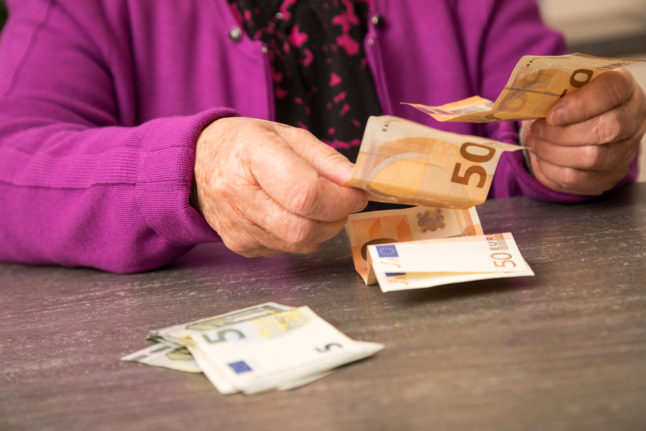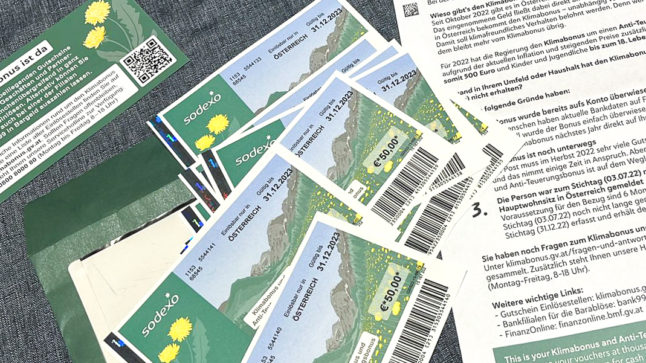Even though inflation is expected to go below the two digits in March, it is still at high levels in Austria, as The Local has reported. As a result, the federal government and provinces have looked for ways to cushion the effects of the high cost of living on its citizens. It has relied heavily on one-off payments, subsidies and bonuses.
This strategy has caused controversy in Austria, with experts warning against the country’s “scattergun approach”. Still, the payments have been popular among residents, particularly the €500 Klimabonus millions of people with Austrian residency received in 2022.
READ ALSO: ANALYSIS: Can Austria’s government get inflation under control?
In 2023, though, there is no sign of such a high bonus for residents, though the Klimabonus is set to come back – albeit bringing only up to €200 to residents’ bank accounts. Still, people in Austria can expect a few hundred euros extra as the government tries to combat the cost of living crisis.
Here are which one-off payments you can expect this month in Austria:
Vienna Energy Bonus
With rising energy prices, Austrian governments have been looking for measures to cushion the effects of inflation on the population. In the capital Vienna, the administration is once again paying out an “energy bonus” of €200 to most households.
According to the government, anyone who applied for and received the energy subsidy in 2022, which is the case for 90 percent of the homes, will automatically receive the €200 in their account from April 17th.
If something has changed in the household (for example, if you moved) or you haven’t applied for the 2022 bonus, you will be able to do so after receiving a letter with a password that will allow you to submit a new application online.
READ MORE: How to get Vienna’s €200 energy subsidy in 2023
Carinthia bonus
The “Carinthia bonus” to cushion rising costs was increased to €600, but most of it has already been paid since the beginning of the year. In April, the remaining €100 will be sent to eligible persons.
READ ALSO: Everything that changes in Austria in April 2023
Housing subsidy
Austrian authorities had debated a rent brake – a limit to rental prices – for months. However, they decided to replace it with a one-off payment after coalition partners could not agree to the details.
Instead of limiting rental increases, the centre-right ÖVP and left-leaning Greens announced a €250 million housing aid boost for Austrian households. The agreement came just before benchmark rents (rents in older buildings which are government-regulated and based on inflation rate) are set for a hike.
Households qualifying for the subsidy will automatically receive the €200 payment as of early April. About one million homes on a lower income will be able to use it.
READ MORE: Austrian government announces €250 million housing aid package
Further payments, including the 2023 Klimabonus, and other benefits, including tax changes, are coming in the next few months.
READ ALSO: Tax cuts and bonus payments: Austria’s financial measures that will benefit people this year



 Please whitelist us to continue reading.
Please whitelist us to continue reading.
Member comments